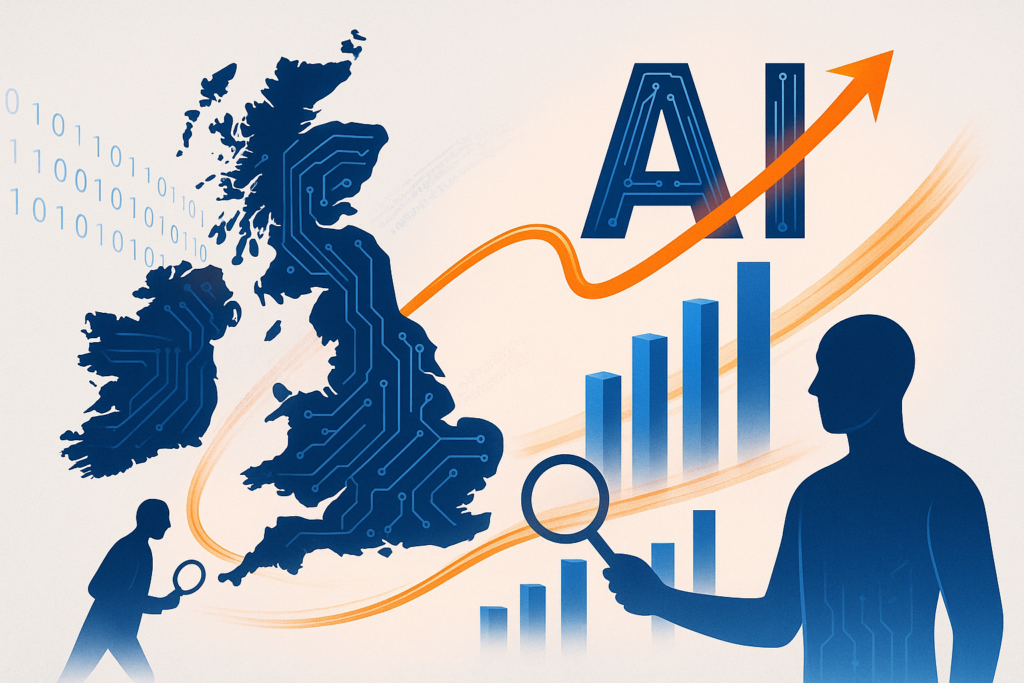Agentic AI and the Future of Audit in the United Kingdom
The audit profession stands at an inflection point. Advances in agentic artificial intelligence (AI), systems that can autonomously decide how to reach a defined audit objective, promise to shift the United Kingdom’s audit model from periodic, sample‑based assessments to continuous, dynamic assurance. Early pilots already show 20‑30 % efficiency gains in fieldwork and sharper fraud detection, while markets and regulators are signalling demand for independent assurance over AI itself. To seize the opportunity while upholding audit quality and public trust, firms must invest in governance, skills and transparent methodologies that put humans firmly “in command” of automated agents.
1. Introduction: Why This Matters Now
AI‑enabled analytics and robotic process automation (RPA) have been mainstream in UK audits for nearly a decade. Yet 2024‑25 saw three pivotal developments:
- Policy Push – The Department for Science, Innovation & Technology’s AI White Paper and 2025 AI Opportunities Action Plan flagged “autonomy risk” as a regulatory priority.
- Regulatory Signals – The Financial Reporting Council (FRC) began consulting on the audit implications of AI‑generated evidence and agentic systems.
- Market Momentum – Big Four and mid‑tier firms announced AI‑assurance offerings and partnered with vendors to embed autonomous agents in audit platforms.[1]
Together these trends create both a commercial imperative and a public‑interest obligation to articulate how agentic AI will reshape assurance.
2. Defining Agentic AI
Unlike traditional machine‑learning models that predict an outcome for a single task, agentic AI combines perception, reasoning and action‑selection to pursue multi‑step goals. Core capabilities include:
Capability | Relevance to Audit |
Autonomous task decomposition | Breaks a high‑level audit objective (e.g., test revenue recognition) into sub‑tasks (identify contracts, extract terms, recompute revenue). |
Dynamic tool selection | Chooses the right technique (statistical sampling, NLP, graph analysis) on‑the‑fly. |
Memory & feedback loops | Learns from reviewer notes to refine subsequent work‑papers. |
Secure action execution | Performs read‑only queries across ERP, document stores and external data to gather evidence without human prompt. |
In short, agents do not merely analyse data; they decide what to analyse next in service of an audit assertion.
3. Current State of AI Adoption in UK Audit
- Data analytics at scale – Most FTSE 350 audits now use full‑population journal‑entry testing and anomaly detection.
- Assurance over AI products – Clients increasingly request independent validation of their own AI models, spawning a nascent “AI assurance” market worth an estimated £500 m by 2027.[1]
- Regulatory experiment – The FRC’s 2024 guidance on AI/ML modelling in actuarial work signalled openness to principles‑based oversight.[2]
- Vendor innovation – Platforms such as Thomson Reuters’ CoCounsel‑Audit promise agentic workflows that ingest ledgers, extract unstructured contracts and self‑document procedures.[6]
Yet most deployments remain human‑in‑the‑loop prototypes rather than fully operational agents.
4. Transforming the Audit Lifecycle with Agents
4.1 Dynamic Risk Assessment & Planning
Agents can continuously scrape transactional, macro‑economic and ESG data to update risk heat‑maps. This enables rolling materiality thresholds and “living” audit plans that focus effort where misstatement risk spikes.
4.2 Autonomous Evidence Collection
By chaining OCR, natural‑language queries and API calls, an audit agent can trace a single sales contract from CRM to cash receipt, attaching provenance metadata for each evidence node. Human reviewers shift from data wrangling to sceptical challenge.
4.3 Continuous Controls Testing
Embedded agents in client environments simulate control scenarios 24/7, alerting auditors to exceptions in near‑real‑time. Over time, this could displace year‑end substantive testing for lower‑risk balances.
4.4 Scenario Reasoning & Predictive Assurance
Multi‑agent systems run Monte‑Carlo simulations on macro shocks and internal process changes, quantifying prospective misstatement exposure which is vital for going‑concern opinions.
4.5 Auditing AI Systems Themselves
As enterprises deploy agentic AI internally, auditors must test model governance, training‑data lineage and real‑time override logs, effectively “auditing the robot auditor”. The Big Four’s new AI assurance frameworks are early moves toward this future.
5. Regulatory and Ethical Considerations
Dimension | Emerging UK Position |
Standards | ISA (UK) currently technology‑neutral; FRC exploring supplementary guidance for AI‑generated evidence and agentic workflows. |
Explainability | DSIT guidance calls for “meaningful human‑reviewable audit trails” for autonomous systems.[4] |
Cyber & Resilience | The 2025 Code of Practice for the Cyber Security of AI sets baseline requirements for secure model hosting and change control.[3] |
Bias & Fairness | Regulators expect agents to document dataset representativeness and bias‑mitigation steps. Non‑compliance may breach Equalities and Data‑Protection law. |
Liability | Until courts test agency in negligence, audit firms remain liable for agent‑performed work. Engagement letters and insurance will need updating. |
Ethical deployment also demands proportional scepticism: if an agent flags 1 % of revenue contracts as anomalous, is that due to genuine risk or false‑negative bias?
6. Redesigning the Audit Operating Model
- Governance – Embed a chief AI‑risk officer role; adopt three‑lines‑of‑defence for model validation.
- Talent – Develop hybrid “audit‑data‑scientist” career paths and mandate AI ethics CPD hours.
- Architecture – Isolate agent sandboxes from client production systems; enforce immutable audit logs.
- Methodology – Update sampling guidance to incorporate agent‑driven full‑population coverage thresholds.
- Culture – Celebrate challenge over automation: auditors must feel empowered to over‑ride an agent’s conclusion.
7. Strategic Recommendations
Stakeholder | Action |
Audit Firms | Prototype narrow‑scope agents (e.g., lease IFRS 16 testing) before scaling; publish transparency reports on agent performance. |
Regulators | Issue consultative notes mapping ISA (UK) objectives to agentic techniques; coordinate sandboxes for safe experimentation. |
Boards & Audit Committees | Demand AI‑governance disclosures; include agentic‑AI readiness in auditor selection criteria. |
Professional Bodies | Expand ethics codes to cover agent delegation; curate case libraries on AI assurance failures. |
8. Plausible Futures to 2030
Scenario | Key Features | Likelihood |
Augmented Auditor | Agents handle 60 % of fieldwork; humans focus on judgment. | High |
Autonomous Audit | End‑to‑end agentic audit with human sign‑off, enabled by real‑time data feeds; ISA overhaul. | Medium |
AI‑Integrated Reporting | Financial statements auto‑published on blockchain‑based ledgers, audited continuously by agent swarms. | Low‑Medium |
Regardless of path, trust will hinge on transparent oversight and shared assurance standards.
9. Conclusion
Agentic AI is not science fiction, it is entering UK audit engagements today. Early movers will gain efficiency and insight, but the profession’s licence to operate rests on demonstrating robust governance, explainable evidence and public‑interest focus. The next five years are critical: the UK can lead by aligning policy, regulation and professional standards to steward this powerful technology responsibly.


